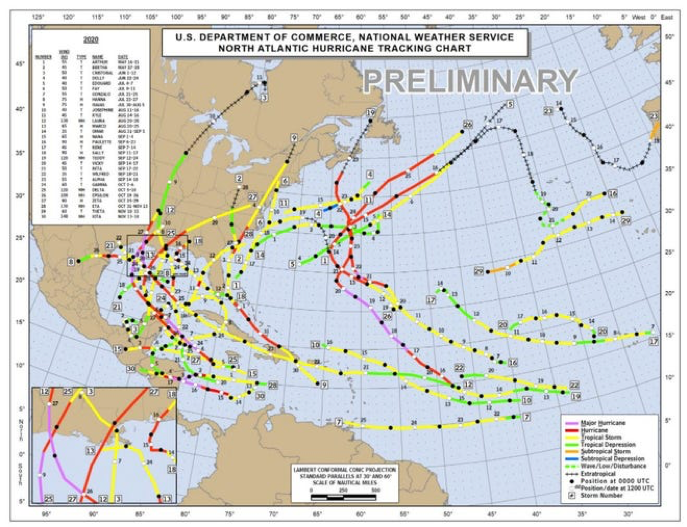 Covering COVID-19 is a daily Poynter briefing of story ideas about the coronavirus and other timely topics for journalists, written by senior faculty Al Tompkins. Sign up here to have it delivered to your inbox every weekday morning.
Covering COVID-19 is a daily Poynter briefing of story ideas about the coronavirus and other timely topics for journalists, written by senior faculty Al Tompkins. Sign up here to have it delivered to your inbox every weekday morning.
The American Academy of Pediatrics says children accounted for 2% of new COVID-19 infections a year ago. But now, children — who make up 16% of the U.S. population — account for more than 24% of new weekly infections.
This is an opportunity to recall some context. Younger people tend to have far milder COVID-19 symptoms than adults. Fewer than 2% of pediatric COVID-19 cases result in hospitalizations. Older people are far more likely to die from COVID-19. And, most notable, even though children make up a bigger percentage of overall cases, the number of pediatric COVID-19 cases is going down.
“Since the pandemic began, children represented 14.2% of total cumulated cases,” AAP says. “For the week ending June 24, children were 10.1% of reported weekly COVID-19 cases.”
These two charts tell the story. Look at the declining number of pediatric cases in the first chart. In the second chart, notice that because of the overall decline in adult cases — especially because the most vulnerable senior citizens are largely vaccinated now — pediatric cases represent a larger percentage of overall cases, even though they are declining.
But because overall cases are also going down, and because children are largely still unvaccinated, they represent a greater percentage of the overall new caseload.
Child tax credit checks are arriving soon
Starting in a couple of weeks, the IRS will begin sending payments worth up to $300 per child to tens of millions of families across the United States.
These are not new payments, per se. They are tax credits that families would usually get when they file their tax forms each year. But now, instead of a bigger refund, they get six payments sprinkled throughout the current tax year and then six months of credits when they file their taxes.
Some families will opt out of the money-now plan if they like getting a lump-sum refund in the spring or if they fear they may have underpaid their taxes this year and will need a tax credit to offset that amount when they file. One way that could happen is if, for example, they land a raise or a new job that pays more than the $75,000 threshold. That would make them ineligible for the child tax credit.
CNET provides five ways to figure out if you are eligible for a child tax credit. CNET has a calculator to help you figure out how much is on the way to your bank account:
And while parents of new babies will generally qualify for the full amount, that could change if you have shared custody of a child. US citizenship also plays a role, so if any of your kids are adopted from another country, you’ll want to make sure you know all the rules that apply to of kids.
For more, check here to see if your state owes you money, how you could get money back for your child care costs and if you could get a refund for the unemployment tax break.
Canada-US travel: Step one of a multi-step process
Starting this week, Canadians can re-enter their home country without quarantining. However, they first have to have a negative COVID-19 test before they enter and another one once they arrive in Canada.
The border cautions are causing a lot of angst for border communities and businesses that rely on people crossing borders in both directions — especially those that rely on summer tourism.
The Canadian and U.S. governments aren’t expected to reevaluate the border closure until July 21.
Commercial traffic has gone back and forth normally between the two countries since the start of the pandemic. Canadians are able to fly into the United States with a negative COVID-19 test and Americans can visit Canada to see relatives or close friends as outlined by a strict set of guidelines. But to do that, people entering Canada must quarantine for two weeks on arrival and the quarantine is enforced by the Royal Canadian Mounted Police.
The U.S. Travel Association estimates that each month the border is closed costs $1.5 billion. Canadian officials say Canada had about 22 million foreign visitors in 2019 — about 15 million of them from the United States.
One city, one weekend, 92 people shot
By any standard, the gun violence that unfolded in Chicago over the last few days is astonishing. 92 people were shot. 14 people died. A Chicago police commander and a sergeant were injured.
Among the other victims that I want to list individually so you will pay attention:
Since July 2, there have been 11 mass shootings in the United States.
How climate change is and is not connected to hurricanes

This GOES-16 GeoColor satellite image taken Monday, July 5, 2021, at 4:50 p.m. EDT, and provided by NOAA, shows Tropical Storm Elsa over western Cuba with strong rain and winds. (NOAA via AP)
Here where I live in South Florida, the first storm of the year stirs conversations that center on questions like, “Isn’t this year’s storm season starting earlier than normal?” and “Is this because of climate change?” and “Are storms getting worse?” The answers cause confusion because the data, at the moment, provide different answers to each of those questions.
Are we getting storms earlier each year? 2020 was a hurricane season for the record books. And there have been five named storms so far this year, beating the record set last year.

Named storms in 2020 (US Commerce Department)
Hurricane season officially starts June 1, but it is not all that unusual to see storms arrive before then.
In truth, “pre-season” storms occur every five years, so we should perhaps reconsider what we consider to be the “season.” In fact, it is a serious discussion that could result in moving the official start of the hurricane season to mid-May in the future.
Are we getting more hurricanes than we used to? The answer to this may surprise you. The federal Climate.gov website, part of the National Oceanic and Atmospheric Administration, says, “Most climate model studies project the total number of TCs each year to decrease or remain approximately the same.”
One of the great curiosities is why there was a sustained hurricane drought from 2005 to Hurricane Harvey that came ashore in 2017. There are many factors in this discussion. The determination of what qualifies as a major hurricane changed over the years, and some damaging storms were not officially hurricanes. Sandy, for example, was a post-tropical cyclone when it washed into New York.
Climate experts say that we do not have enough high-quality climate data to make definitive statements yet about the cause-and-effect facts related to climate change and hurricane frequency.
Are storms getting more severe? This answer is yes, and the reason is connected to a rising sea surface temperature. Remember, warm water feeds storms. NOAA has suggested that an increase in Category 4 and 5 hurricanes is likely, with hurricane wind speeds increasing by up to 10%. It is a global trend, too.
Hurricanes are getting wetter, too. Hurricanes Harvey, Florence and Imelda are examples of that. NOAA puts it this way:
Warming of the surface ocean from anthropogenic (human-induced) climate change is likely fueling more powerful Tropical Cyclones. The destructive power of individual TCs through flooding is amplified by rising sea level, which very likely has a substantial contribution at the global scale from anthropogenic climate change. In addition, TC precipitation rates are projected to increase due to enhanced atmospheric moisture associated with anthropogenic global warming.
Yale researchers explained it in clear terms saying, yes, storms are intensifying and, while it might be part of a normal cycle, human-caused climate change may also be a factor. They say this because they cannot find anything in historic records that mimics what they see in the data today. In short, this is not a settled matter, except that storms are getting stronger.
Are storm zones changing northward? A firm “maybe” on this question is in order. The movement of tropical cyclones seems to be changing. They are more likely to move forward more slowly, which gives them time to gather strength and cause more damage when they pass over land.
And the locations of storms seem to be shifting. Jim Kossin, an atmospheric scientist with NOAA’s National Climatic Data Center, analyzed historical records of storms and documented that on average, the latitude where tropical cyclones reach their peak strength has shifted farther north of the equator in the Northern Hemisphere:
The shifts in where storms form and reach maximum intensity are particularly bad news for the United States and Japan.
We’ll be back tomorrow with a new edition of Covering COVID-19. Are you subscribed? Sign up here to get it delivered right to your inbox.













